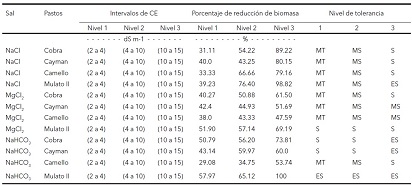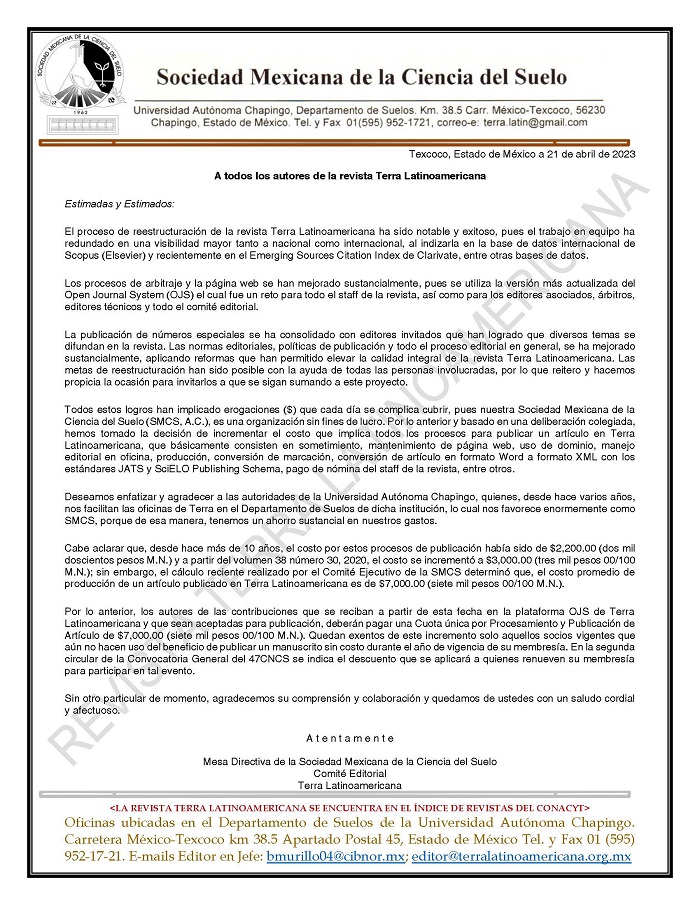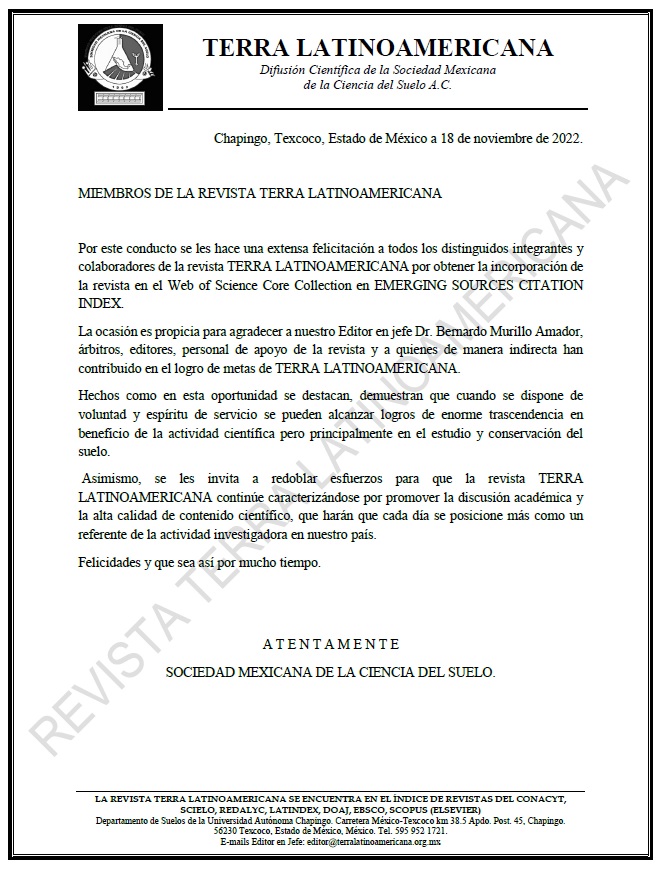Tolerance of hybrids of the genus Brachiaria to various greenhouse saline conditions in Santa Elena, Oaxaca
DOI:
https://doi.org/10.28940/terra.v41i0.1602Keywords:
electrical conductivity, growth and development, osmotic potential, pure salts, physiology droughtAbstract
In a greenhouse on the coast of Oaxaca, the tolerance of the hybrids pasture of the genus Brachiaria: Cobra (BR02/1794), Cayman (BR02/1752), Camello (GP 3025) and Mulato II (CIAT 36087) to induced saline conditions by NaCl, MgCl2 and NaHCO3, was evaluated with seven salinity levels: 0, 1.13, 2.48, 3.84, 5.19, 6.40 and 9.60 g L-1. The percentage of emergence, plant height, stem diameter, number of leaves and tillers, root length and biomass production were recorded. The experimental design was made up of a factorial with three salts, seven salinity levels, four grasses and three repetitions, which yield a total of 252 experimental units. The emergence percentage incresead over time in all cases and the growth parameters plant: height, stem diameter, number of leaves, and tillers, root lenght and total biomass production, decreased as the saline level increased in the following order Cobra at a saline threshold of 5.19 g L-1of NaCl, which is why it is considered moderately sensitive. While the grass that produced the least amount of biomass (0.34 g pl-1) was Cayman at a saline concentration of 1.13 g L-1 of NaHCO3. The experimental salts produced dwarfism and growth inhibition at concentrations greater than 6.40 g L-1, a phenomenon intensified by NaHCO3. The low tolerance of Cobra, Cayman, Camello and Mulato II grasses to NaCl, MgCl2 and NaHCO3 salts at concentrations > 3.84 g L-1 limits its cultivation to the coastal plain of Oaxaca. However, its implementation in field is possible with the application of sustainable techniques for the use and management of soil and irrigation water, to reduce the ef fects of salinity and improve forage production.
Downloads
Publication Facts
Reviewer profiles N/A
Author statements
- Academic society
- Terra Latinoamericana
- Publisher
- Mexican Society of Soil Science, C.A.

















